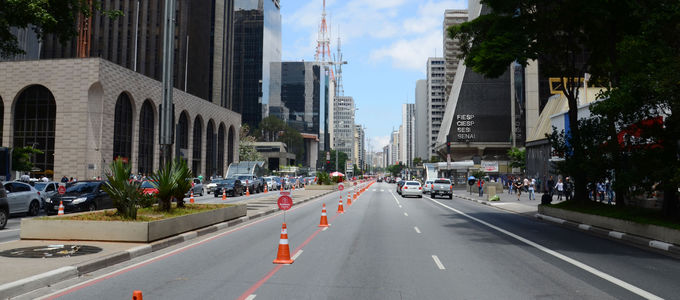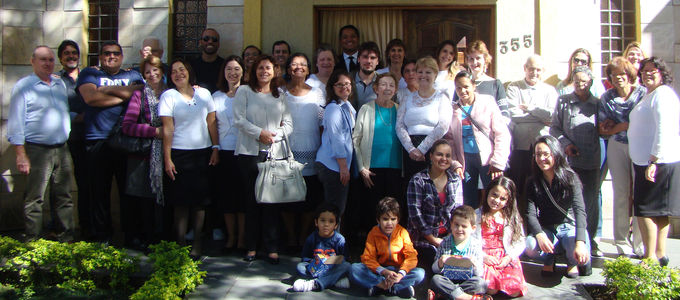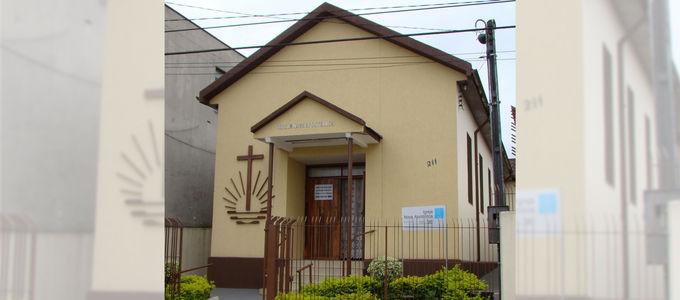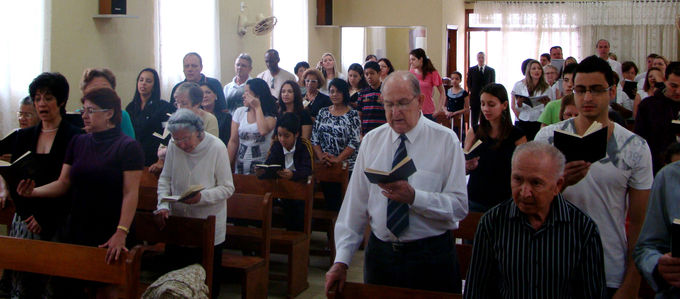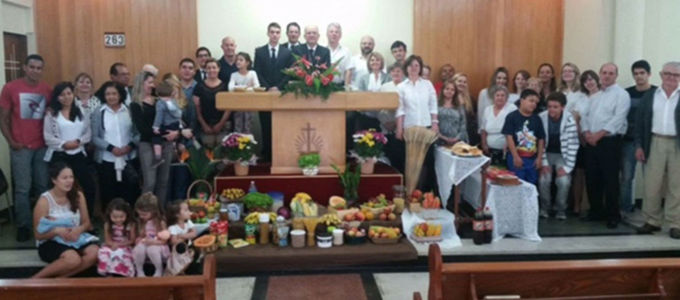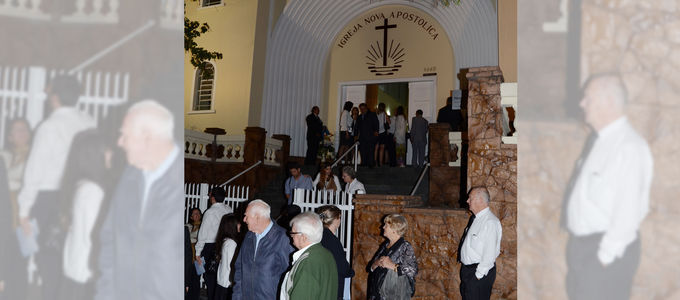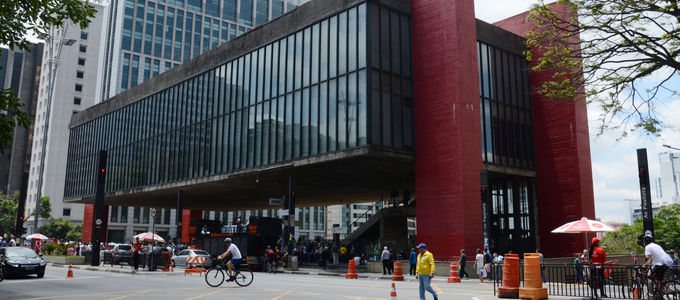
A population of twelve million in the city proper, and twenty million in the metropolitan area: São Paulo is the largest city in South America. And how do New Apostolic Christians live there?
São Paulo recently celebrated its 468th birthday. The booming megacity in the federal state of the same name is the most important city in Brazil—it is both the financial and economic hub of the country. Karin Zwar, our nac.today correspondent in Brazil, speaks very respectfully of the “engine that drives Brazil”!
The city, however, generates more than just money. It also offers a lot worth seeing. There are many sights that are an absolute must for tourists: the São Paulo Museum of Art (MASP, Museu de Arte Moderna de São Paulo), Paulista Avenue, Ibirapuera Park, the municipal theatre of São Paulo, the Pinacoteca, and the Mercado Municipal (a market and a gourmet point in the city). For foodies, São Paulo is heaven: it is home to more than 12,000 restaurants with some 52 different types of cuisine.
A multicultural meeting point
Sampa, as São Paulo is fondly called, is multicultural. Countless immigrants from around the world have made it their home. Whether Portuguese, Italian, German, Lebanese, or Japanese, they are all there. There are typical ethnic communities in the city. In Bixiga, the most traditional Italian neighbourhood, you find the best cantinas and pizzerias. Liberdade is home to Japanese, Chinese, and Korean cuisine. And most of the factories and businesses in the district of Brás are run by people from Arab countries. The world’s biggest companies have subsidiaries in the city: General Motors, ZF, Pirelli, Ford, Firestone, Volkswagen, Mercedes-Benz, BASF, Bayer, and many others. This brings trade fairs and international events into the city.
New Apostolic congregations
São Paulo is also a metropolis of churches and religions. The Roman Catholic Church is the largest, but there is a whole range of other denominations
What about the New Apostolic faith? In the 1930s, many Europeans immigrated to Brazil and settled in São Paulo, among them New Apostolic families. They somehow heard about each other and word got around. The first services took place in the home of Family Koller in Santana. From then on, the New Apostolic Church in Brazil experienced steady growth.
Today, there is a beautiful New Apostolic church in Santana. A congregation of about 50 members gathers regularly. The rector is Priest Alberto Gonzaga. Divine services take place on Wednesdays and Sundays, and the choir creates a beautiful atmosphere. Santa Clara is about 15 kilometres from Santana. The congregation has 55 regular visitors.
The New Apostolic congregation of Bosque da Saúde is situated in the centre of the city. The services are usually attended by 40 members. There is even a small ensemble, comprised of a violin and a flute. The church building has excellent acoustics. The rector’s name is Jorge Alexandre Farias.
Bosque da Saúde is the neighbourhood and congregation where most of the expats attend divine services who work for foreign companies in São Paulo. They come from South and North America or Europe and usually stay in the country for several years. Bosque da Saúde is also the congregation in which central divine services take place with the District Apostle or Apostle, and to which the congregations Santana, Santa Clara, Santo André, and São Bernardo do Campo are invited. Chief Apostle Jean-Luc Schneider celebrated a divine service for ministers there in 2014.
Regional meeting places
Bosque da Saúde is also the church where the regional choir of São Paulo practises. The members meet for lunch after service and then have a choir practice of two to three hours in the afternoon. Although that means work, they enjoy the fellowship a great deal. It strengthens their faith and delights the soul.
São Paulo is a giant city with a lot of charm and its own personality. It was created by immigrants from all over the world, who have preserved their own cultures but have also succeeded in creating a harmonious whole that seeks its own. São Paulo, the country’s engine.






